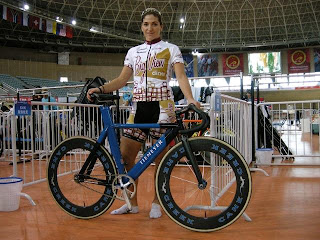Wearables
like Nike’s FuelBand and Fitbit’s Flex and Force have tremendous potential for
athletes and non-athletes alike. By stopping development on FuelBand1
Nike could be walking away from a potential all-star that only needs sound
coaching.
Here are six
ways the FuelBand could still lead the wearables market either on the current
hardware or through partnership other manufacturers and device platforms.
1.
Make the FuelBand for elite athletes: Nike keyed in on the Bill Bowerman
quote; “If you have a body you’re an athlete” in designing the FuelBand. Nike’s
proven path would be to design the FuelBand for highly trained athletes. Nike
should deliver a tool for elite athletes and everyday athletes will follow.
2.
Inspire through social competition: With the launch of FuelBand SE Nike
has attempted to qualify points based on activity type. This needs to be fully
developed to enable cross discipline competition. Currently the value of points
so greatly skews toward some activities like running any other sport type
doesn’t stand a chance. Make the cross discipline competition social to ignite
the users.
3.
Tighter integration with other Nike
tools: Nike Training
Club app is a serious tool for athletes not a toy. The app gives approximate
Fuelpoint value to workouts, but you can’t earn Nikefuel unless you are wearing
the FuelBand. That is a mistake. Nike should allow for users to take those Nikefuel
as qualified versus those who wear the band and earn non-qualified Nikefuel.
Discount them by 25% perhaps… but get more people using Fuel through various apps.
Integrate and expand.
4.
Convert Nikefuel to targeted sales: You shouldn’t have to be a
“fuelionair” to unlock special purchase opportunities. Now that Nike is
collecting information on what kind of sport activities FuelBand wearers are
participating in, very targeting buying opportunities can be provided to consumers
by sport. Nike can leverage the ID program and connect with consumers is a
sport specific and personal way using existing capabilities.
5.
Improve form and function: Nike doesn’t need to reinvent the
technology or function of the FuelBand to consistently offer more beautiful
options. One of the projects killed was development of a sleeker FuelBand. The
FuelBand in its current state is a good first step, however the band is too
large and not aesthetically pleasing enough through color options alone.
Sleeker, more beautiful, more flexible and dressier options would all be ways
the form could be improved.
6.
Integrate with off-platform tools: Several activity types needs to be
added and appropriately valued. The technology to integrate with Garmin is
there and used to great success by the likes of Strava. Nike has thus far not
wanted to use other tool API to calculate Nikefuel. Making a waterproof
FuelBand for swimmer and allowing for integration with Garmin would be quantum
steps forward for this underserved population of athletes. While these are not
core to Nike’s business, leaving them out of Nikefuel slices off a key segment of
athletes who are potential customers.
The good news
for Nike? Development continues on the digital consumer applications the
FuelBand and other applications leverage. Perhaps as Google and Apple enter the
space, Nike decided to exit rather than fight. Using the current “If you have a
body you are an athlete” mass market strategy, it makes sense not to compete
with Google and Apple. Or perhaps Nike’s exits tips towards a future
partnership with one of the electronic giants.
Nike has a
huge advantage for market penetration in the form of highly trained athletes
that lead trends in virtually every sport segment. Once captured, I can think
of only one way for Nike to become stickier in the lives of consumers than
integrating via a wearable device. And that is actually transforming their
lives through exercise.
1 http://www.cnet.com/news/nike-fires-fuelband-engineers-will-stop-making-wearable-hardware/
